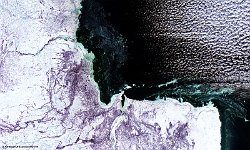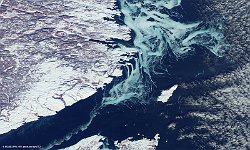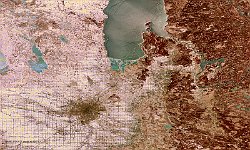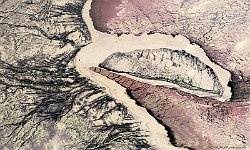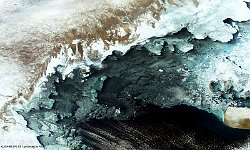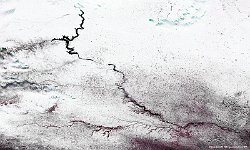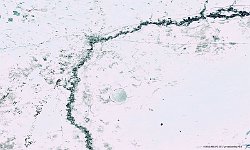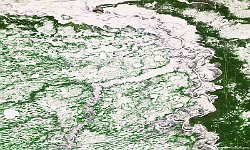1 / 21
Hudson Bay, Canada
With year-round temperatures (-5°C) lower than similar subarctic areas and a higher freezing point (lower salinity) of the water compared to the rest of the oceans, the Canadian Hudson Bay remains frozen for several months each year, typically from mid-December through mid-June. A steady increase in regional temperatures lengthened this ice-free period over the last 100 years. In the southeast of the bay, for instance, the ice-free season was extended by 7 days in the years between 1971 and 2007 alone.
According to the IPCC’s 2014 report, the impact of climate change in the loss, thinning and faster break-up of the ice sheets over land and sea, is likely to threaten the habitats of ringed seal and polar bear populations. For instance in the lowlands of Wapusk National Park, along the coast of the snow-covered Manitoba province, that is shown in this 100 m PROBA-V image from early November 2017. In the image, the cyan is clearly showing the formation of sea ice.
Date: 04/11/2017
Resolution: 100m
